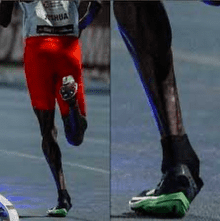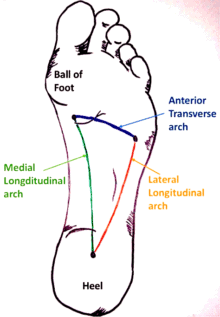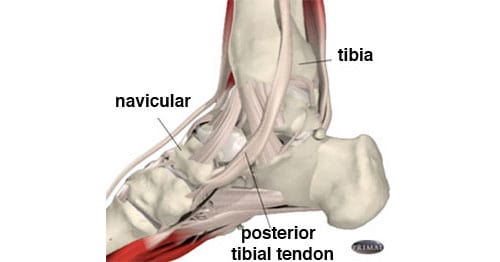Alternative Title: Describing the Avoidant Half I have been writing about asymmetries for some time. Whether it be determining the up leg from from down leg, or the pitfalls of detorsioning the system, I continue to find and… Read more ›
The first post in this series asked if a pigeon toe was friend or foe. It is certainly a strategy, an adaptation that has a purpose. For me, my half with the pigeon toe also carried my biggest problems, particularly… Read more ›
Oh, the mighty pigeon toe. Such a strange little insurgent, and yet, it exists peacefully all around us. Where does it come from and how does it form? Does it afflict one leg or both? Is it the tibia or… Read more ›
Part 1 of this series explained how knee should not be used as a load-bearing joint. Part 2 showed how pressuring the knee can help build safety, alignment, and desired force at the desired time. This third and final segment… Read more ›
While walking through the streets of Europe last Spring, Adarian Barr wondered why his feet felt so good. He traced it back to the cobblestones. The lift, the variability, the multiple points of potential folding. This was the impetus behind… Read more ›
When new words are introduced, we tend to react as if they make things more complicated. We already know. We already have an understanding on what the terms we already use mean. Why would we change? We change when we are… Read more ›
Pairs. Roles. Asymmetry. The body knows and the body has ways. Understanding the differences between the halves helps you appreciate them. One side isn’t ‘good’. The other isn’t ‘bad’. They hold a function within the system. Here’s a big picture… Read more ›
This piece serves as the follow up to How To Push Down. When we are talking about compression, we are also talking about tension. It is the interaction of these two push-pulls that creates suspension. Otherwise everything would collapse. … Read more ›
My left leg has some problems. I could fill in the whys with any number of stories — the many ankle sprains during my athletic career, the torn and hamstring-repaired ACL, the pigeon toe I gave myself because of a… Read more ›
Adarian Barr does this thing. Well, first he does his thing — take a snapshot of what is going on in a way that only he seems to notice. Then he’ll send it to me without words and see what I… Read more ›
This post serves as a follow up to: A Path Towards Harm. Otherwise titled: The things I did wrong when I didn’t pay attention or have compassionate patience. The tag to this blog used to read, “fix yourself.” But… Read more ›
Push down. Seems simple enough. Intuitive. But I got it wrong. I got it wrong because my posture and mechanics favored a front-side dominance. (Quad-dominant folks tend to also fall into this category.) The knee bend, rounded shoulders, and dropped… Read more ›
Everything I know about the transverse arch, I owe to Adarian Barr. The following is my attempt to take his words and concepts and relate them to my own body and understanding. It is, in effect, my translation. The layers… Read more ›
When assessing the lower leg, it has become common place to examine the foot. The pliable and separable toes receive much of the attention. The heel, strange and seemingly uninteresting, gets neglected. Considering the calcaneous is a starting point… Read more ›
The tip toes position is an assessment of toes, feet, and ankle control. Balance comes from joint stacking. The push off when we walk comes from a high heel. A toe point or push is required with reaching. Loaded plantar… Read more ›
In part one of this series, we focused on HOW to create an arch or shortfoot position. Here’s how you can pattern it into your motor subconscious: 1. Single Leg Balance Sequence Create shortfoot and hold throughout the duration. … Read more ›
The feet are the first inputs to the brain. They’ve got proprioceptors all over the place. They allow for adaptation, unlock the knee and hip, and promote anticipation before reaction. Shoes kill these gifts. Be barefoot when you train… Read more ›




















